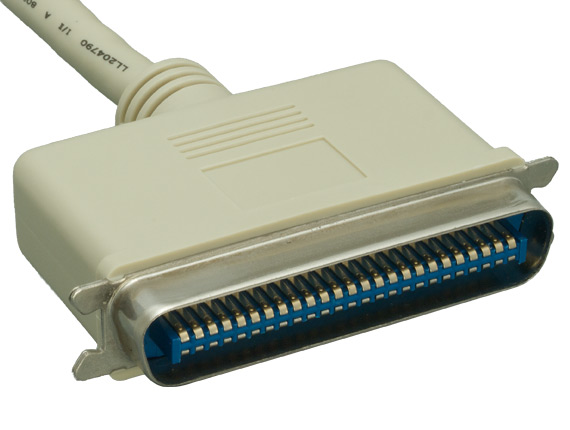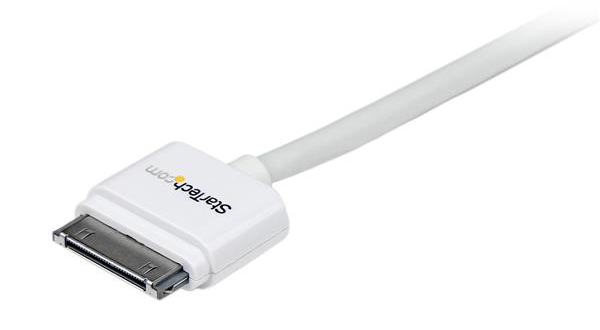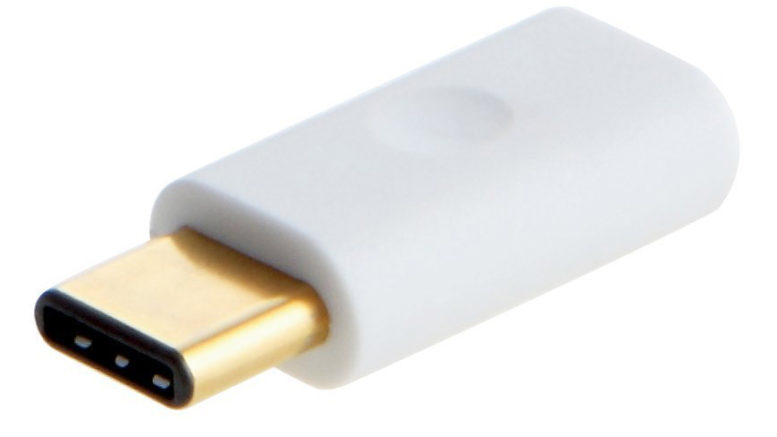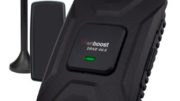I said it was a possibility. In a post from about 7 weeks ago, I said Apple could ditch the Lightning cable. They stayed with the now-venerable cable for their phones, but yesterday’s announcement of four new products had nary a lightning cable in sight.
While it wasn’t a surprise to see Lightning left off the two new computers, Apple’s new iPad Pro tablets both have left Lightning in the dust. Both tablets now connect and charge with USB-C. It’s a very likely sign that all future tablets will abandon Lightning cables.
A little history
Certainly Apple is no stranger to introducing new cables just to dump them in a few years. In its roughly 40 years as a tech company, they’ve had tons of new technologies, all of which are now obsolete. And really I’m not talking about tech that should have died anyway. Sure the ADB cable was a horrendous mess. SCSI-1 was potentially the largest connector you’ve ever seen. Wait I have to show this to you.

SCSI-1 Target Connector
Yes, those technologies deserve to die. However, there was nothing wrong with FireWire 800. A dainty little cable with a blazing fast connection. The same can be said of Thunderbolt and DisplayPort, both recent casualties. And now, it looks like Lightning is headed for the scrap heap too.

The Lightning connector was introduced in 2012 with the iPhone 5. Although the Apple faithful didn’t relish the idea of replacing their cables, its simplicity and durability, combined with small size, made it a hit. That was just six years ago. Lightning probably has another year or so of life in it since new phones were just announced. However, I wouldn’t be stocking up on them unless you really need one now.
Is Lightning better than USB-C?
Objectively, yes. It’s smaller. It’s more durable, and while it’s not as fast, it’s fast enough. But really USB-C is pretty close. USB-C is only a little bit larger than Lightning, we’re talking about a millimeter. It does allow for higher speeds and higher voltages than Lightning. That’s something important for tablets and computers.
Its only weakness in my opinion is that the connector itself still has a void in the center. This is a place for dust to accumulate and make connections harder. But realistically a little bit of canned air is going to fix this.
Why is this big news?
It’s rare that Apple bows to the rest of the industry. Usually they go their own way and if their tech isn’t good enough to compete, they replace it with something else homegrown. If I recall, the last time Apple ditched their own proprietary stuff for industry-standard connections, it was a decade ago when they went from the “Apple Cinema Connector” to DVI and HDMI for monitors. They don’t usually bow to popular demand. This time though, they did.
Apple has been preparing for this move for some time. The 2018 iPad Pro 10.9 actually has a USB controller chip in it, even though there isn’t a USB connector. The chip enables fast charging when used with an absurdly expensive power brick. Now that brick is the default choice for new iPads, so hopefully it will come down in price.
USB-C will allow this new iPad to use not only faster chargers, but other accessories. There’s even hope that it could be used for external storage, something that a computer definitely needs. If this is supposed to be your primary computing device, you’ll need to connect it up. Lightning just wasn’t going to cut it for that purpose.
Will Apple go all-in and put USB-C on their phones?
I think it’s quite likely. Even though the connector is bigger and every micrometer in a phone is precious, I think they’ll suck it up. Why? I think they’ll more or less have to.
Folks this isn’t 2003. Back then every phone had its own proprietary power brick. Today people want one connector for everything. Some countries actually require all the cell phones sold there to use the same power brick. In countries where that’s the case, Apple provides a dongle but that’s an inelegant solution.
I forecast that Apple will drop Lightning on its next generation of phones, and most people won’t care. USB-C cables are fairly cheap and easy to find. This could even help people migrate back to iPhone from Galaxy or other devices.
While Apple does make a fair amount of coin from its “Made for iPhone” cable licensing, let’s face facts. They can afford to walk away from that if it’s going to make manufacturing more efficient or sell more phones. I think in the short term it’s going to cause a little bit of grumbling, but nothing like the initial furor when Apple replaced the now-forgotten 30-pin dock connector.

This one connector spawned a cottage industry of iPhone products in the last decade. From speakers to alarm clocks, millions of iPhone-compatible products were made. All of them are probably in a landfill by now.
Today though, it’s just not such a big deal. Audio? It’s probably Bluetooth. Charging? It’s wireless. Data transfer? It’s done over Wi-Fi. When Apple says goodbye to Lightning, as they probably will, people will move on. Period.
In the meantime, get a jump on the revolution. Shop now for the USB-C products you’ll need at Solid Signal.






